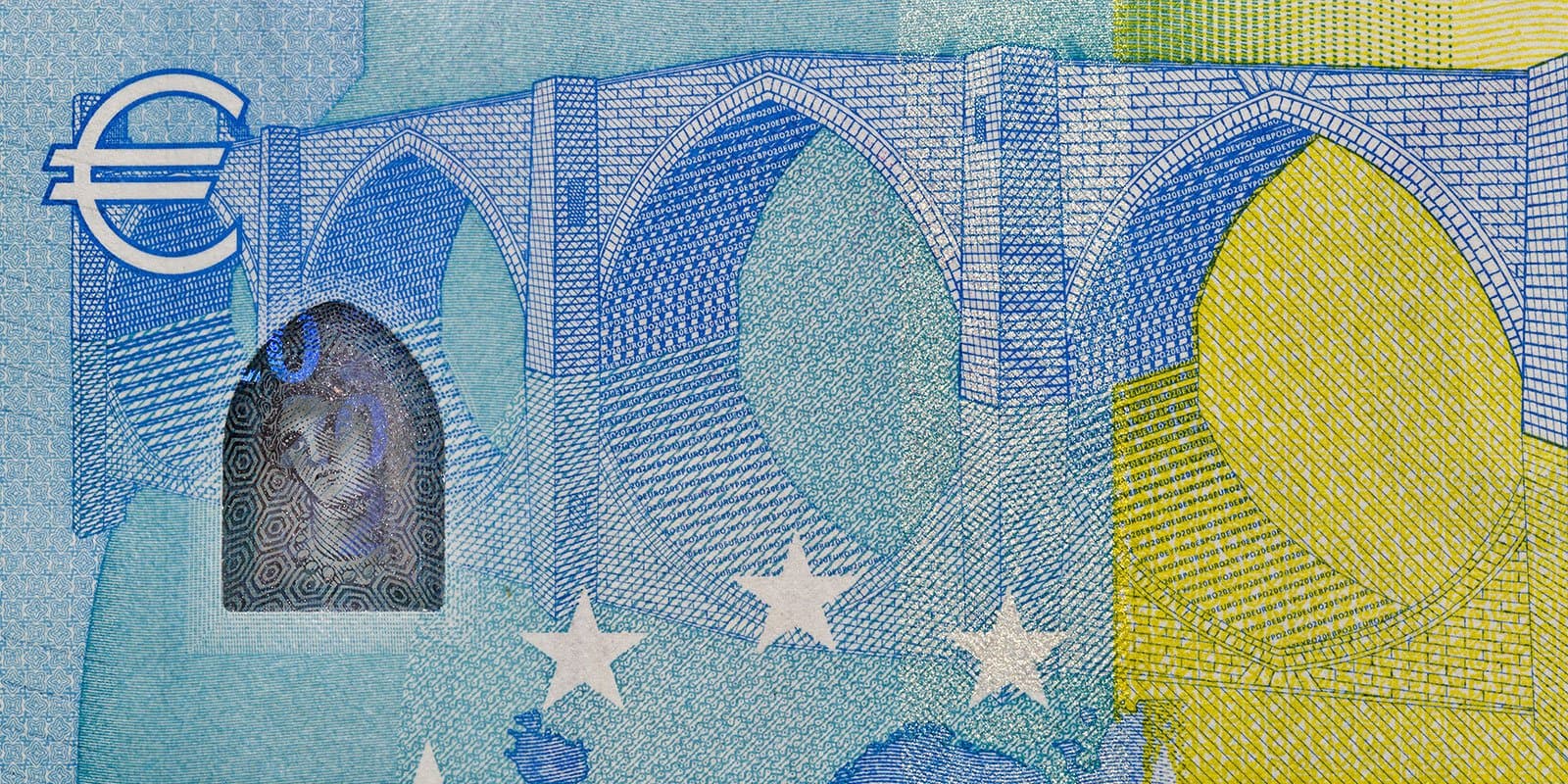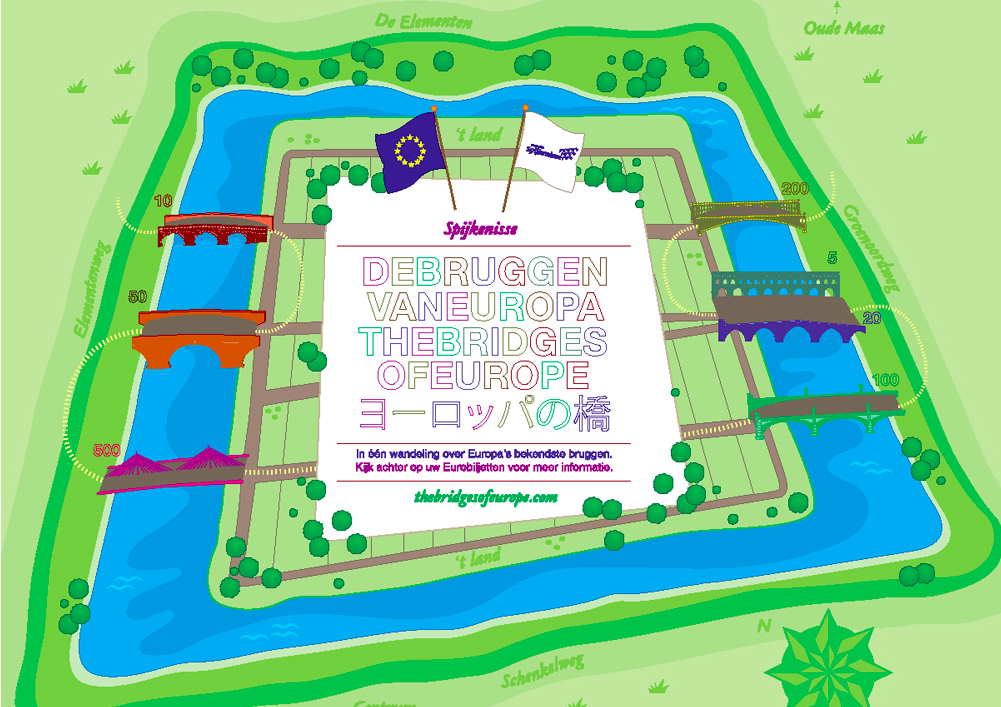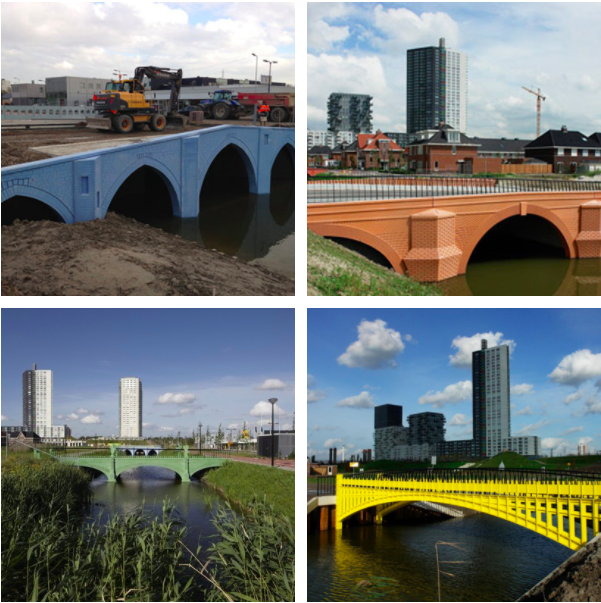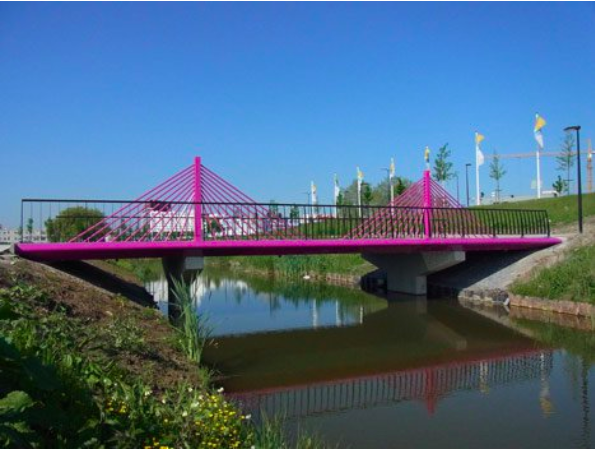
Bruggen van Europa (Bridges of Europe) and the artist behind cash-inspired architecture
In 1999, the euro was born but in virtual form. By 2002, the euro's banknotes and coins had entered into circulation. But it wasn't until 2015 that they came to life... so to speak.
The euro is a currency issued by the European Central Bank and shared by 19 EU-member countries: Austria, Belgium, Cyprus, Estonia, Finland, France, Germany, Greece, Ireland, Italy, Latvia, Lithuania, Luxembourg, Malta, the Netherlands, Portugal, Slovakia, Slovenia and Spain.
Yet, while most proud citizens the world over can name the treasured faces, landmarks and animals immortalised on their beloved country's banknotes and coins, it is surprising how few Europeans know the names of the bridges and arches on their euro notes let alone that they are... well, not real.
The colourful European bills are instead emblazoned with Austrian artist Robert Kalina's seven visions of fictitious bridges, arches and window panes designed to echo the major 'ages and styles of Europe':
- €5 - Classical Antiquity
- €10 - Roman period
- €20 - Gothic period
- €50 - Renaissance
- €100 - Baroque & Rococo
- €200 - Iron & Glass
- €500 - Contemporary 20th-century architecture
Excerpt from Bruggen van Europa post by Robin Stam
The euro currency consists of various coins as well as seven banknotes, each note depicting a different bridge. The images are meant to symbolize the close cooperation and communication between countries within the European Union, but also between Europe and the rest of the world.
"You might be surprised to find out these bridges are purely fictional - they don’t exist anywhere in Europe! That is until I decided to do something about it..." - Robin Stam
Dutch artist Robin Stam designed seven bridges, which were then constructed near a housing estate in the southern part of the Netherlands near Elementen, Spijkenisse. Rather than building them over a main canal or river that sees more foot traffic, the young designer's dream was to build the grandiose-looking bridges an oddly smaller physical counterpart, giving them a humorous angle. Literally!
"But again reduced to the scale of the pedestrian and the cyclist. It gets a bit hilarious when you see a pedestrian walking over the cable-stayed bridge of the 500-euro bill. The pylon is just as high as it is. "
Excerpt from City Lab's article
After some deliberation, the council decided to splurge for Stam's set of rainbow spans. At $1.3 million, Stam's are about 25 percent more expensive than "catalogue bridges," but the council took a bet on publicity. "All the attention is more than worth it," the Spijkenisse alderman Gert-Jan ’t Hart, who spearheaded the project, said last year when Stam's bridges were under construction.
Excerpt and images from 99percentinvisible article
Stam even contacted the European Central Bank (ECB) to secure a letter of approval for the project, which was granted in good humour. The gallery below shows each bridge in order of numismatic value (click to enlarge and see more about each structure):
Excerpt and image from Dezeen article
"I wanted to give the bridges an exaggerated theatrical appearance – like a stage set," adds Stam, who poured dyed concrete into custom-made wooden moulds to make them.
All seven bridges surrounding the development have been completed and are being used by cyclists and pedestrians. Stam says they have divided opinion among residents: "Some people's initial impression is that the bridges are ugly but when they find out the story behind them they find it really funny."
Sources
Stam, Robin. 'Bruggen van Europa'. VISSCH+STAM. Electronically published 2013. Accessed January 13, 2018.
Stam, Robin. 'The Bridges of Europe'. Robin Stam Tumblr. Electronically published 2013. Accessed January 13, 2018.
Grabar, Henry. 'Europe's Most Famous Fictional Bridges, Brought to Life.' City Lab. Electronically published June 14, 2013. Accessed January 13, 2018.
Griffiths, Alyn. 'Fictional bridges on Euro banknotes constructed in the Netherlands'. Dezeen. Electronically published June 5, 2013. Accessed January 13, 2018.
Tissink, Ad. 'Interview Robin Stam: Met eurobruggen op de kaart gezet'. Electronically published July 5, 2013. Accessed January 13, 2018.
Related articles
Cash Matters What if big brands had their own currency? A young designer's state of worldwide perplexity
So, you know about old cash, new cash, local cash and award-winning cash... but have you heard of brand cash? A creative mind hailing from France designed a beautiful set of brand-inspired mock banknotes, which got finance and fine art fiends in cyberspace wondering, what if companies became States and had their own currency?



